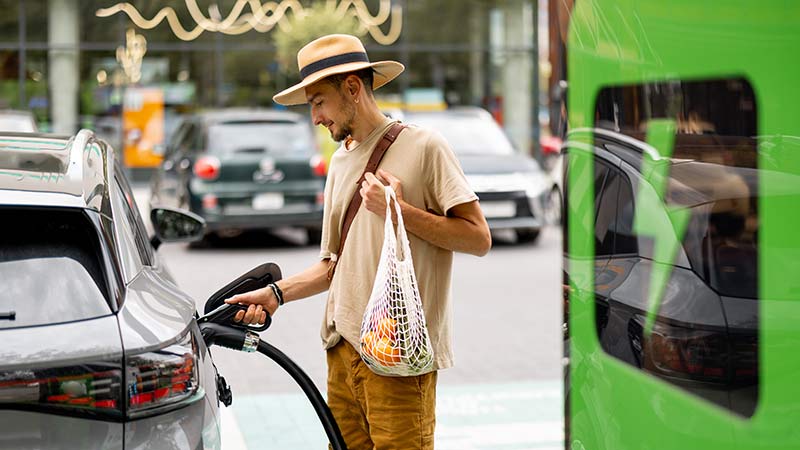Sustainable spending: What financial institutions need to know
Creative ways to meet consumer demand for climate-conscious financial services

Consumers around the world are concerned about climate change. How can we continue to live our lives while being more mindful of the planet’s resources? Retailers have begun to answer that question with accessible solutions like re-commerce, refill and zero-waste programs, as well as addressing their own carbon footprints. Financial institutions (FIs) are not far behind.
Smaller FIs and fintechs have thought beyond the paperless statement box and provided greater transparency and sustainable-first products and services. At Visa, we helped Etihad Airways and First Abu Dhabi Bank develop their cutting-edge sustainability-focused co-brand Visa card that rewards consumers for making more sustainable choices. Future CEO Jean-Louis Warnholz also spoke with us about launching the FutureCard Visa debit card, which offers 5 percent cashback on eco-conscious spending, from shopping secondhand to taking the train or charging an EV. Tomorrow Bank is another emerging FI that has placed sustainability at the forefront of its business by funding environmentally and socially sustainable projects (transit and affordable housing) and financing climate protection.
Sustainable spending on the rise
Sustainable spending, according to Visa survey data, is set to shape the future payments landscape. In a U.S. survey by Visa, 72 percent of consumers said that sustainability was very important to them.1 Driving this trend are millennial, Gen Z, and affluent consumers who show more affinity for brands who act more sustainably, reward sustainable behaviors and offer environmentally friendly products and services.
FIs that think creatively in this area — whether in small or big ways — can increase existing customer loyalty, attract the attention of new consumers and differentiate their brand from competitors — all while contributing to broader sustainability goals.
The opportunity in sustainable practice
Low-lift initiatives include tracking your carbon footprint and sharing information about your sustainable practices and offerings with clear, concise and compelling marketing messaging. Technology providers like Tink, a Visa solution, and fintechs like ecolytiq can also help FIs offer their customers the ability to calculate the carbon footprint associated with their purchases.2
At the higher end of the lift, FIs can impact the industry by restructuring their businesses to center on more sustainable products, processes, and propositions. This may include cards made of recycled plastics or virtual cards, and refining existing rewards programs.
FIs have a tremendous opportunity to create a more sustainable and responsible banking environment for their customers while enhancing their reputation and growing their business. From providing sustainable products and services to supporting sustainable initiatives, we can collectively build a better planet and better future for our industry.
Learn more about Visa’s sustainability efforts at Visa.com.
1 Visa survey. “Identifying Opportunities to Engage Consumers on Sustainable Banking Products”. October 2021
2 Tink, How epap is using transactional data for sustainable finances, August 2021, https://tink.com/blog/use-cases/epap-sustainable-receipts/